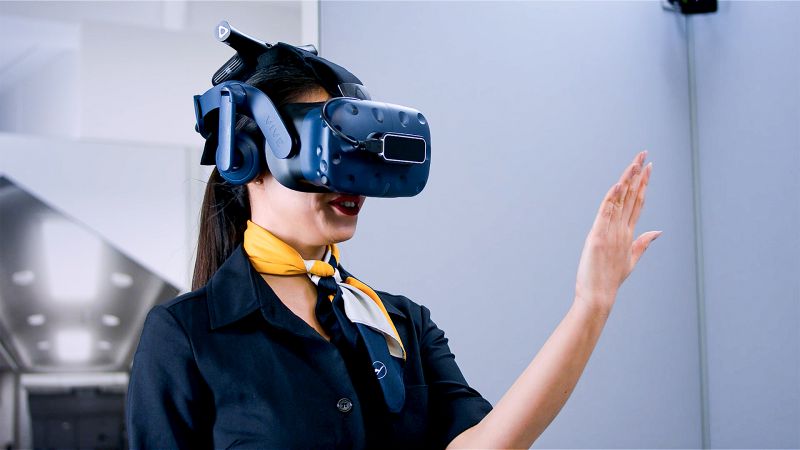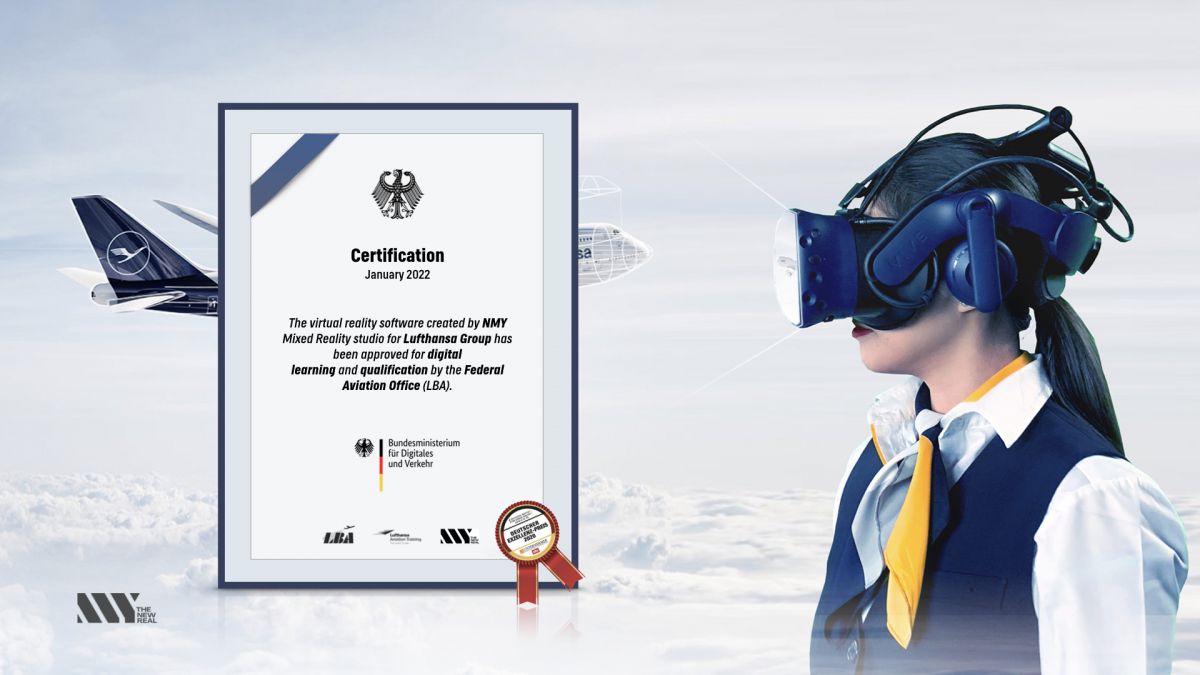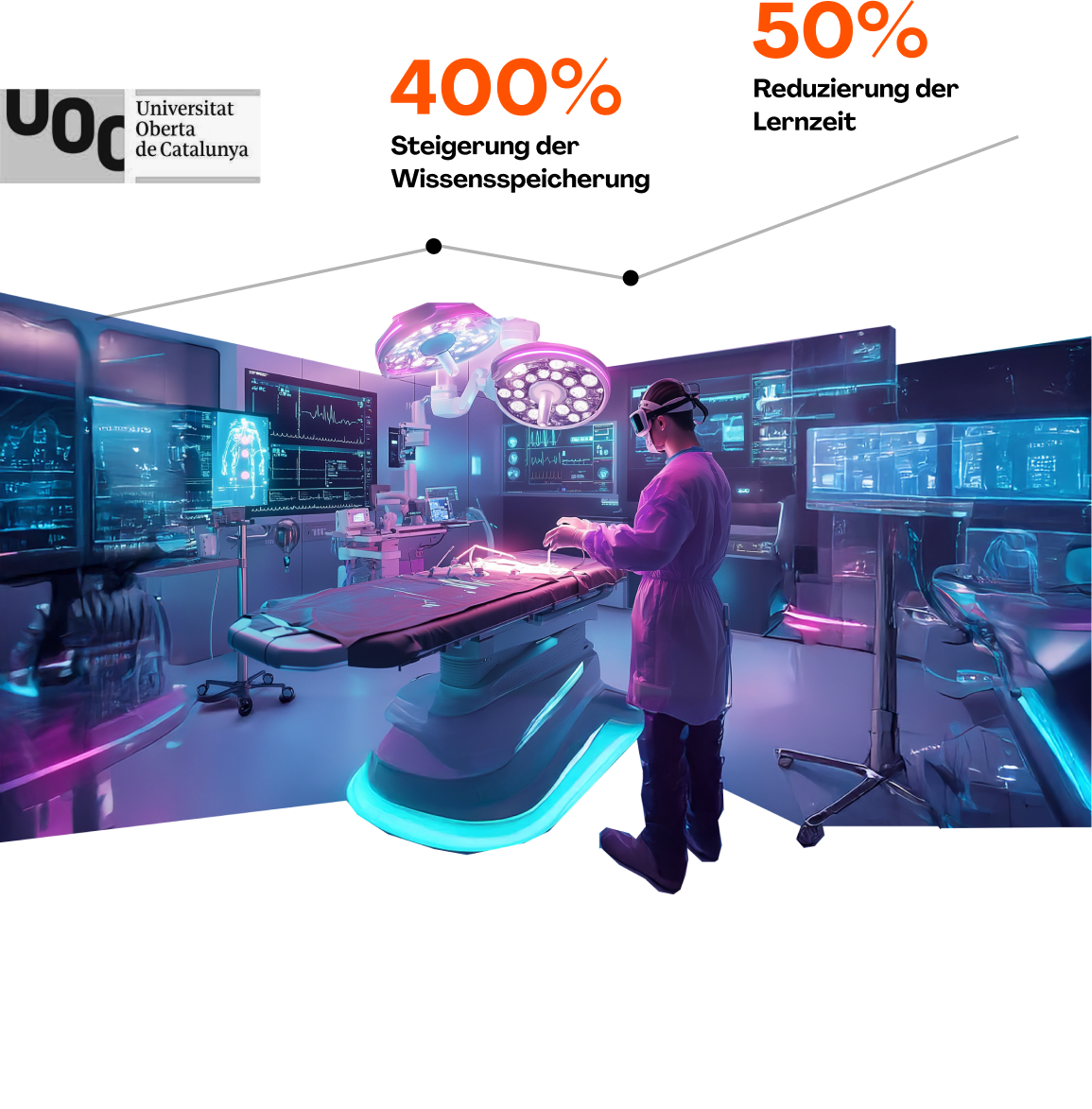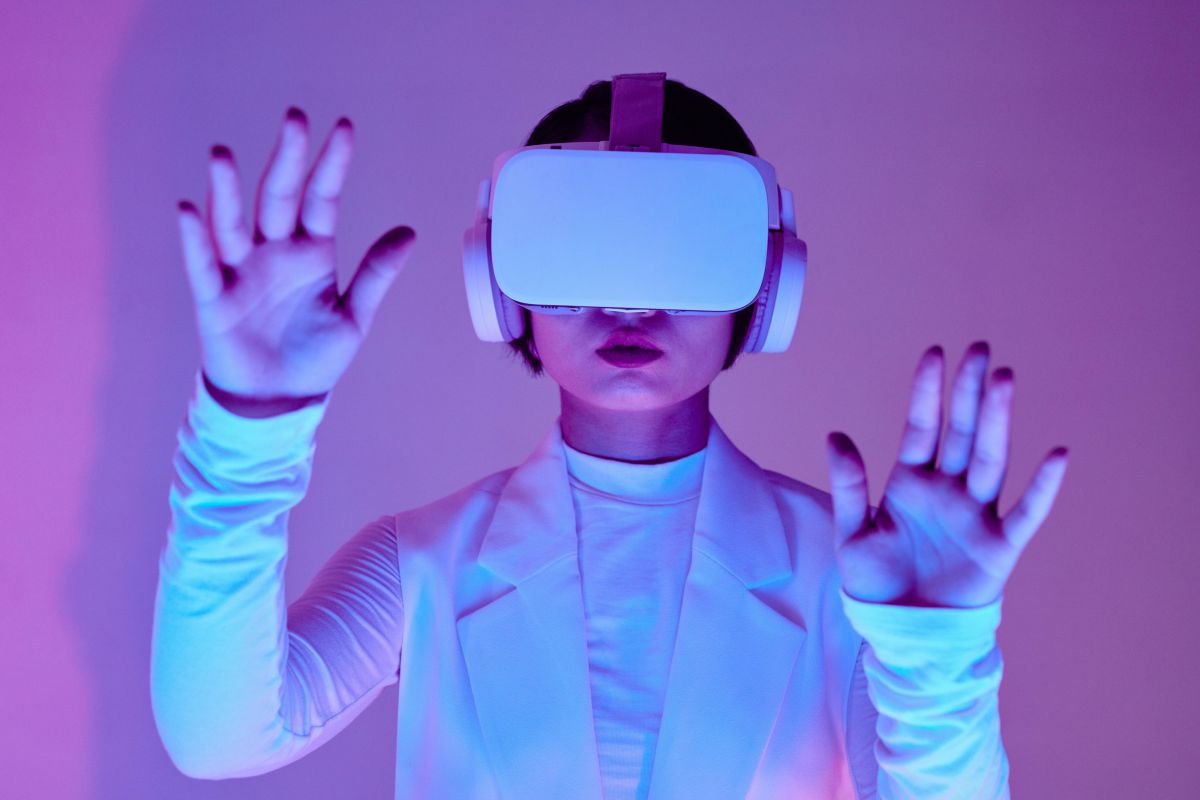
What is the impact of XR in the craft sector?
It is a fact that more and more young people choose a university degree over an apprenticeship, or a skilled craft job. (Source: bmwi, German only) Reasons for this include the perceived lack of attractiveness of many trades and the image of having been left behind in the digital age. We believe that skilled crafts will hugely benefit from employing the latest technologies such as Mixed Reality (XR). The possibilities here range from trend-setting advertising to attract newcomers to the profession up to the digitalization of training and innovative support for skilled craft in everyday work situations.

Benefits of Mixed Reality for skilled craft
Touchable Knowledge
Learning materials become visual, practice-oriented, and will be effectively mediated
Gamification equals fun
Creating easy access to complicated topics
Safe
simulation
Trainings are independent of time and location, no wear and tear of material
Saves
costs
On education and learning materials, Interruptions of the production process are avoided
Confidence boost
For apprentices and relief for coaches through practical training.
Inspire and Encourage
The BBIB study: What Makes Training in Skilled Craft Attractive (German only) shows that many young people initially underestimate the potential and quality of skilled occupations. However, their perceived attractiveness increases with increasing knowledge of the occupations!
How to overcome this initial hurdle? With mixed reality experiences, companies are improving their recruiting marketing, for example to highlight the diversity and creative design possibilities of a certain occupation. This could be a simulated work process in which typical work steps are presented in a simplified form. Even a heavy piece of equipment can be used virtually at training fairs (e.g. driving a crane or operating a chain saw) in order to spark the enthusiasm of the audience for using such tools in playful training courses.
With the help of gamified simulations of such work processes, the attention at a trade show stand increases and, moreover, the fear of contact with otherwise dangerous or seemingly difficult work dissipates.
Example of Application: Laying Tiles in VR
Customers of American DIY store Lowe’s learn basic DIY skills in an interactive VR application that enables them to carry out a bathroom renovation. The result: In comparison to a simple YouTube tutorial, the participants of the VR training were able to access and apply learning content 36% better.
Especially interesting for the following professional groups: Painters, tilers.
Benefits for customers
Getting to know tools: Which ones are there? What are they used for? How are they properly handled?
Creativity: Experimenting with tile colours and shapes
Self-Confidence: overcoming fears of contact and strengthening confidence in your own craftsmanship skills
You will not get dirty, unlike in real life :-)
Example of Application: Chainsaw Simulation Game
Players dislodge logs in a VR limbing competition. In tool manufacturer Husqvana’s VR simulation game „Limberjack“, players compete in rankings for the “golden chainsaw”. Speed and a good posture are important, because whoever would have injured himself with uncoordinated movements in the real world will lose points.
Interesting for the following professional groups: Forester, landscape gardener, arborist.
Application Benefits
No real danger of injury
Online rankings enable global competition between players
Crowd magnet at trade shows
Real tools turn digital
Training on real devices is also supported and extended with digital tools. This leads to a better simulation of the handling and haptics of the devices – making sure nothing stands in the way of realistic training. The example video demonstrates from forestry South Africa demonstrates how it is done.
(Quelle: YouTube | Forestry South Africa (FSA), FP&M SETA)
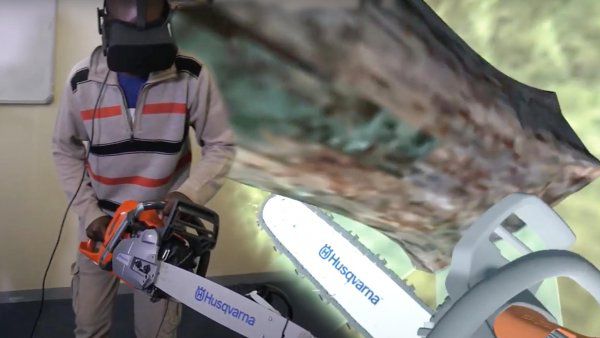

Transferring Knowledge efficiently
… and creating a secure environment to try things out.
Compared to conventional media or dry textbooks, VR training enables an intensive, practice-oriented learning experience that directly links knowledge transfer with physical work and the corresponding movements. In this way, what has been learned is anchored more efficiently and can later be retrieved more easily. Read more in our article VR Training for Companies.
This type of training also has the advantage that various training scenarios can be set up completely independently of location. Whether on a construction site, in a forestry operation or in an industrial plant, trainers and trainees can meet in a networked and remote environment. And this saves costs: For the virtual lessons, production processes are neither interrupted, nor machines blocked. Expensive materials don’t have to be used. And the danger of injury is practically non-existent in VR.
To efficiently track learning progress, the correct execution of work steps is automatically checked. In this way, errors can be pointed out more quickly, without additional workload for the training personnel.
Example of Application: VR and AR printing machine
In Heidelberger Druckmaschinen AG’s virtual training, students explore components on their own.
Training Benefits
Flexibility: Production does not have to be stopped to accommodate apprentices
Simplification: Complicated processes are taught interactively and can be tried and tested without limitation
Simulation is inexpensive and independent of location
Example of Application: Training maintenance staff
Maintenance staff of plant manufacturers and operators of the GEMÜ Group is interactively led through a step-by-step simulation.
VR Training benefits
Individualization: Participants configure their own avatar
Feedback: Learning process is displayed
Sustainable knowledge transfer: Learned skills are better retained
Efficient progress tracking: The correct execution of work steps are checked automatically

Efficient Innovation – From Consultation to Installation
Mixed reality technologies offer multiple application possibilities in manual work processes. For example, in virtual pre-visualization for planning and customer consulting. “The use of virtual reality is a sensational opportunity for almost all planning and executing skilled craft such as construction, plumbing and heating technology or our trade, the carpentry trade, to offer our customers not only an impression of space but also a spatial experience,” says Danny Hammer, Managing Director of Hammer & Margrander Interior GmbH in Ettlingen in an interview with ZDH (German only).
The initial effort of 3D data acquisition required for this is worthwhile for the companies several times over. The data can be used in various applications, from planning to production plant, to facilitate production and coordination processes in the future and set new standards in terms of precision and efficiency.
In maintenance and assembly, digital tools such as step-by-step instructions, 3D measurement systems or remote assistance systems with position-correct display of important additional information can also help make tasks easier, safer, faster and of higher quality.
Example of Application: Dynamics 365 Remote Assist
An augmented reality headset and mobile app enable the remote maintenance of specific machines during multi-user online conferences with the help of skilled staff.
Remote Maintenance Benefits
New employees work at a similar level as experienced employeesr
Hands-free option through voice assistant
Less environmental damage and fewer transport costs
Team communication is easier
Extended collaboration possibilities: draw up sketches together, mark objects
Example of Application: Tutorials for machine maintenance
With Craftguide’s 3D app, mechanics are guided step by step through manual workflows. Maintenance and repairs can be carried out without having to study operating instructions.
3D tutorial benefits
Step by step instruction with detailed interactive visualizations
Easy and quick access to information about specific machine parts
3D technology as a part of an originally analog process


